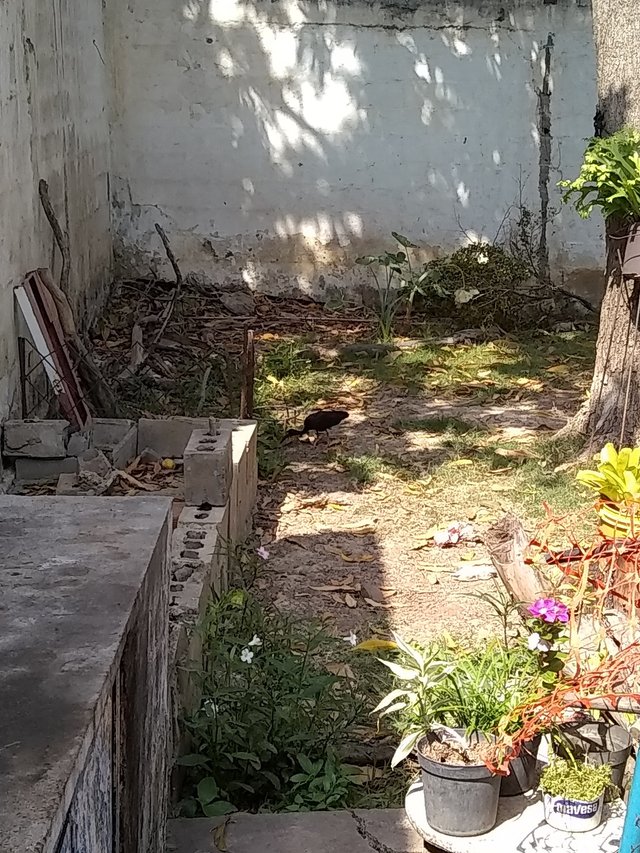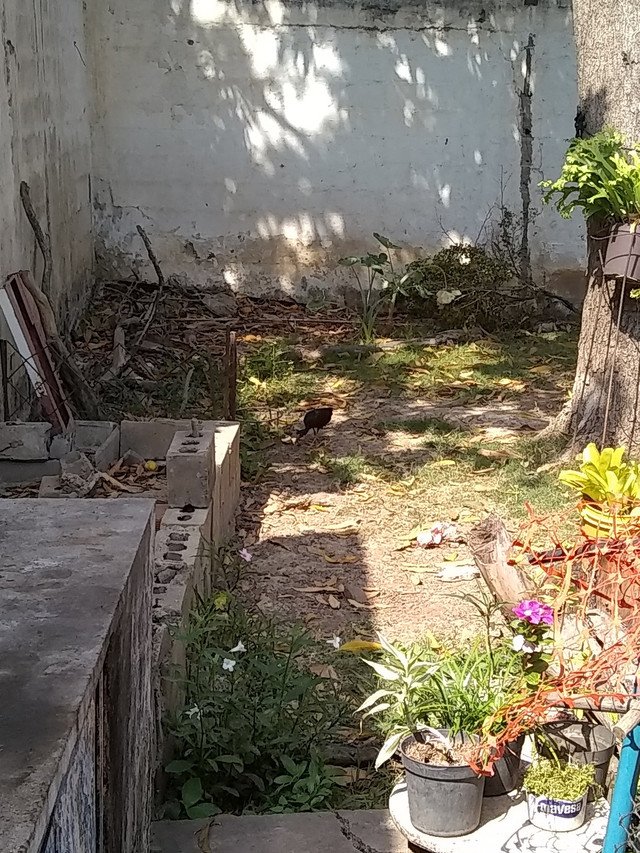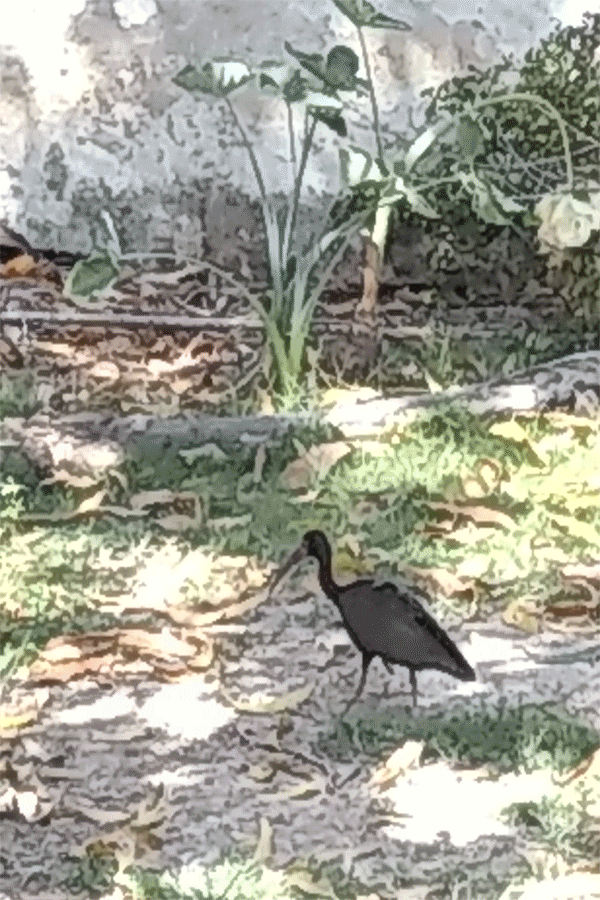A peculiar visit
Greetings friends, good morning, today I bring you something peculiar that happened to me the day before yesterday morning, I started thanks to God having a cup of coffee, and after finishing watching the F1 Quali (the Austrian GP), I go to the courtyard where I see between the shadows of the mango tree a somewhat peculiar bird, so with great care I proceeded to go quickly to the kitchen to get my phone to capture the moment, with the illusion that when I returned it was still here.
Fortunately for me, I was able to capture a few pictures of his tour of the patio, and I recognize that this bird had never in my life had the opportunity to see him in these parts. Because basically the birds that commonly come to the patio are small birds, not as big as this one, so you can have an idea of the average size of the birds that come here are not even a quarter of the size of this one, so when I saw it I immediately caught my attention.

It is worth noting that I did not hear him sing at any time, but this did not stop me from being surprised by this bird, because it was roaming the yard in search of food, so I could observe it seemed to dig a little in the ground near the roots of the mentioned mango tree.

After a while I was walking around and I saw how it went away, but unfortunately I could not capture the moment, which is how it can be a little logical thanks to the size of the bird to a great noise if it flaps its wings and goes in a southeasterly direction and takes its way to another place.

So then I was curious to know what kind of bird it would be, so with the photo I already had a good reference, and then I went to the one who has many answers to many questions ... Yes, that same Google hahaha, so when doing a simple search as "long-billed black bird in Venezuela" Google found the species that is called scientifically as "Bare-faced ibis" or colloquially as "red-faced swamp crow.
I found this bird very rare and when I read a little about it I found some information that I find incredible. It is characteristic of South America, from Venezuela and Colombia to the north of Argentina, as it is from a habitat of open swamps, savannahs, flooded fields and similar.
Fortunately this specimen is of minor concern, so it is not endangered or similar, but nevertheless the common risk for them is the contamination of their habitat so this may explain a little why this bird came to my yard, which reminds us that they are altering their common places to stay in one way or another.
Depending on what I research, these birds eat insects, small vertebrates and worms. So you must have reached the foot of the mango tree, since there is a certain amount of moisture in that area and it is relatively common to find earthworms when digging a little.
We hope that on another occasion you will be able to observe this particular bird a little more and how not to take more pictures of it and share the experience with you.
Without further ado, thanks for reading my post and getting to this part, thanks for the support and hopefully a little more than God will come more and better content. God bless you.
If you are interested in knowing a little more about this bird here I will leave you two Wikipedia links that I read to know a little more about them. The first one is in English and the second article is in Spanish.
The photos were taken with my Motorola Moto E4 8Mpx, excuse the resolution a little, but that effect is due to the action of digital zoom, which takes to extremes in the quest to focus the bird as much as possible from a distance to avoid chasing it away. The Gif was made by me with Photoshop.